- Air Homepage
- Weather Equipment
Find out what Weather Equipment you may need
What you need to know about weather equipment - What's the difference between an anemometer and a psychrometer? Or how does a balloon measure the weather? Get to know the tools that help us predict the next big storm and keep you safe, from simple thermometers to advanced Doppler radar.
Why might you take an interest in weather instruments? We use weather instruments to measure and observe the atmosphere. We need them to understand and predict the weather and climate, which is important for our safety. As well as providing valuable data, they help us make informed decisions.
Instruments measure and record weather data such as atmospheric pressure, temperature, humidity, and wind speed. Weather data helps predict future weather patterns and inform people who operate in agriculture, transportation, and other activities.
Imagine you were looking online to buy weather stations, accessories for professional weather stations, like this Stevenson Screen, or perhaps one of the many new types of home weather stations.
Detailed information about these items and the instruments included in each set-up can be found in the article on this page and in the links within each section. Click the blue text above to learn how weather equipment and software might be used in environmental regulatory compliance consulting and research.
Here are some of the more common instruments and supplies. You've probably heard of some of these.
Thermometers and barometers
A barometer measures atmospheric pressure. What is that?
Air pressure is force from the air per unit area, measured in pounds per square inch. Every square inch. In absolute terms, this pressure does not change very much, but a little goes a long way. For instance, people who get barometric pressure headaches know how small pressure changes can affect them. These changes affect every inch of their bodies.
Technology is sensitive to pressure changes in varying degrees as well. Barometric pressure transducers, for example, have a special kind of sensitivity.
Have you ever considered building your own barometer? Check out these methods: Barometer Design
#1
Barometer Design
#2, and
Barometer Design
#3
A thermometer measures air temperature in degrees and gives us a numerical value.
Everyone knows what temperature is, right? It is the degree of hotness or coldness that you experience.
We get these numbers from temperature recording weather equipment. It ends up in a database so it can be analyzed later. Examples of this type of weather equipment include dataloggers and computers.
What can you tell me about humidity?
Humidity's the amount of vaporized water in the air.
We usually express humidity by using relative humidity. Find out how humidity-related quantities are used in science in this article.
What's the best way to measure Humidity? Meteorologists and technicians use hygrometers. An instrument called a psychrometer humidity meter does the same thing.
Two thermometers show the temperature here. The one is wet, the other is dry. Then we can compare them, calculate and chart the dew point to use in our analysis.
Rain & Wind
Wind
moves
objects around, and we can determine how fast and which way the air goes by observing the motion of these objects. Flags, airport wind socks, and weather vanes are commonly used for this purpose.
Weather vanes and comparable kinetic motion indicators point in the right direction. Instruments that measure wind speed are called anemometers. Combining these two values (speed and direction) gives us a vector quantity.
What the heck is that? It's one that requires at least two inputs, in this case speed and direction. After the measurement is complete, this information is recorded by wind data loggers.
Rain gauges are another type of weather instrument. How much rain (or snow) did we get last night? Find out what this number means.
Weather Equipment for Measuring the weather without being outside
We refer to this as remote sensing. We can check weather conditions from a distance with some devices. Weather services use these data sources and observations from surface-based weather equipment to make forecasts. Here are a few examples:
A Radiosonde shown in this photo combines a package of temperature and humidity recorders with a few other instruments. They send weather info back to earth via radio signals from within a box which includes a transmitter and locator.
Attach the package to a weather balloon, let it fly, and record these parameters at various elevations
and even hundreds of miles downwind.
Weather Satellite
- a spacecraft high in the sky. We equip satellites with cameras so we can take photos of the clouds below. Some satellite
gadgets can see inside the clouds. Only these devices are capable of providing atmospheric information from outside of the atmosphere.
Radar (RAdio Detection And Ranging). A system for sending and receiving microwaves, and is primarily used for finding stuff. Radar has been used to find military vehicles, artillery, obstacles, and storms with areas of precipitation.
Doppler Weather Radar - can help us tell which way things are moving and how fast they're going. Useful for finding speeding cars and also preparing a weather advisory - a severe weather forecast that helps storm chasers find tornadoes, (a.k.a. tornados), and other strong winds.
Occasionally, pilots will describe weather they encounter on their flights. They can't get everything from the weather reports they see before takeoff. They send pilot reports or PIREPs when they observe something unusual.
Want to see some official weather observations,
made with scientific and electronic weather equipment like the items listed above? Look at a METAR observation. Here's how to decode and read a METAR.
#1
All these different kinds of weather equipment are enough to even make Bill Nye's head spin. Do you have a passion for weather equipment? I would like to know more about your setup.
Can you do it better?
You like this Idea? It works for its intended purpose, but probably is not perfect. Why not?
Do you know of a better one? We'd all like to see it, I'll bet. A penny for your thoughts.
Other people and their ideas...
Click below to see hi-tech contributions from other visitors to this page...
Thermometer for Temperature 




In the business of weather, we use a thermometer to measure the instantaneous temperature in a specific location. The word "thermometer" came from the …
Thermometer 




A thermometer measures the tempreture of things.
Barry's Response - You can use a simulation of a thermometer to display measurements of anything. …
What does a hygrometer measure 




what does a hygrometer and anemometer do in the weather?
Barry's Response - Brittney:
Weather instruments like these:
A thermometer measures …
Stevensons Screen 



Protecting your meteorological instruments with the perfect box Are you ready to stop guessing and start recording accurate weather data? It's time …
We the People 



We the people stand here today to show that our nation is under extinction and we need to act fast to get rid of all this pollution and trash in the world …
How do we experience weather Not rated yet
This Latest Weather Of Vidisha City
Barry's Response - The weather forecast for Vidisha City is provided at the bottom of the home page at infovidisha.co.in …
What weather equipment have you seen?
Where can we find whether we need equipment or instruments for home weather stations? Weather station equipment comes in practical and decorative forms.
Do you have concerns about air pollution in your area??
Perhaps modelling air pollution will provide the answers to your question.
That is what I do on a full-time basis. Find out if it is necessary for your project.
Have your Say...
on the StuffintheAir facebook page
Other topics listed in these guides:
The Stuff-in-the-Air Site Map
And,
Thank you to my research and writing assistants, ChatGPT and WordTune, as well as Wombo and others for the images.
OpenAI's large-scale language generation model (and others provided by Google and Meta), helped generate this text. As soon as draft language is generated, the author reviews, edits, and revises it to their own liking and is responsible for the content.
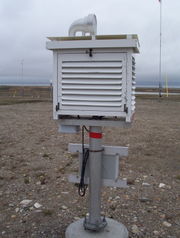
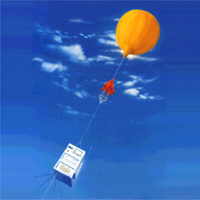


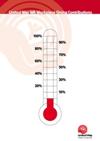
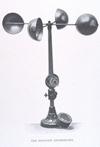
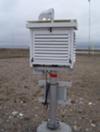
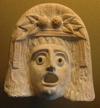
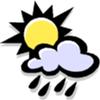


New! Comments
Do you like what you see here? Please let us know in the box below.